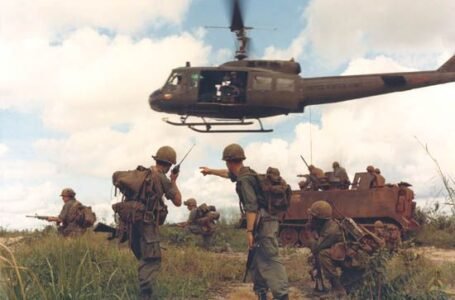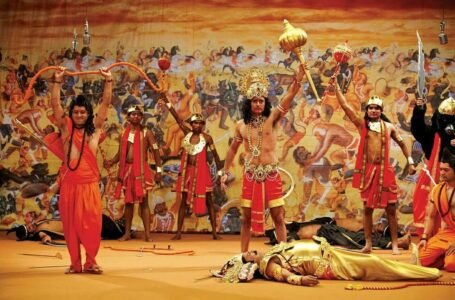Charwa Geet of Bihar: The Vanishing Echoes of Pastoral Life

Folk music has always been an integral part of India’s cultural and social heritage, with each region having its own unique musical traditions. Bihar, a land steeped in history and tradition, has a rich folk music culture that reflects the daily lives, struggles, and joys of its people. Among these traditional forms of music, Charwa Geet holds a significant place. Known as the songs of shepherds and cowherds, Charwa Geet captures the essence of pastoral life in Bihar. These songs, sung by the rural communities tending to cattle and sheep, are now on the brink of extinction due to modernization, migration, and changing socio-economic conditions.
Origin of Charwa Geet
The roots of Charwa Geet can be traced back to ancient times when Bihar was predominantly an agrarian society. The life of farmers, shepherds, and cowherds revolved around agriculture and animal husbandry. Music played an important role in their daily routine, providing a rhythmic flow to their tasks and offering companionship during long hours in the fields and pastures. These songs were traditionally passed down orally from one generation to another, preserving the wisdom, beliefs, and traditions of rural Bihar. The melodies were simple, yet deeply resonant with the experiences of the working class, offering insights into their joys, sorrows, and aspirations.
Trailblazers of Charwa Geet
While Charwa Geet has always been a folk tradition without specific composers or lyricists, there have been individuals who contributed to its popularity. Local poets, wandering bards, and folk singers helped in spreading these songs across villages. Some efforts have been made by folk musicians and cultural organizations to document and preserve these melodies, but much of this rich musical tradition remains unrecorded. Prominent folk artists in Bihar have attempted to revive interest in Charwa Geet through performances at cultural festivals and folk music concerts.
Why is Charwa Geet Known as the Song of Shepherds and Cowherds?
The term Charwa is derived from the Hindi word ‘Charan’ meaning ‘to graze’. As the name suggests, Charwa Geet was primarily sung by shepherds and cowherds while tending their livestock. These songs were not merely entertainment; they served as a means of communication among herders spread across vast grazing lands. They would sing in call-and-response patterns, allowing them to coordinate movements, share warnings, and express emotions. The themes of Charwa Geet often revolved around the bond between the herder and his animals, the challenges of rearing cattle, and the beauty of nature.
Reflection of Pastoral Life in Charwa Geet
Charwa Geet beautifully encapsulates the simplicity and hardships of pastoral life. The lyrics often depict the daily struggles of shepherds and cowherds, such as protecting livestock from predators, enduring harsh weather conditions, and navigating economic hardships. At the same time, these songs celebrate the idyllic beauty of the countryside, the changing seasons, and the deep connection between man and nature. The songs also include narratives of love, longing, separation, and devotion, making them deeply emotional and relatable to the rural folk.
The Decline and Extinction of Charwa Geet
Despite its cultural significance, Charwa Geet is now nearing extinction. Several factors have contributed to its decline:
- Modernization and Urbanization: With rapid urbanization, the pastoral lifestyle that gave birth to Charwa Geet is diminishing. Traditional herding and cattle rearing are being replaced by mechanized farming, reducing the number of people who engage in these occupations.
- Migration of Rural Populations: Many young people from rural Bihar migrate to cities in search of better economic opportunities, leading to a disconnect from traditional folk practices.
- Lack of Documentation: Since Charwa Geet has largely been an oral tradition, the absence of written records and proper archiving has made it difficult to preserve.
- Influence of Modern Music: The rise of popular Bollywood and commercial music has overshadowed folk traditions. The younger generation is more inclined toward contemporary musical forms, leading to a decline in folk music appreciation.
- Decline of Community Gatherings: In earlier times, folk songs were an essential part of village gatherings, fairs, and festivals. With changing lifestyles, such communal interactions have reduced, leading to the gradual disappearance of Charwa Geet.
Efforts to Preserve Charwa Geet
Despite the challenges, several initiatives have been taken to preserve and revive Charwa Geet:
– Folk Music Festivals: Cultural organizations and state governments have started organizing folk music festivals where traditional songs like Charwa Geet are performed and promoted.
– Archival Projects: Some ethnomusicologists and researchers are working to document and record these songs for future generations.
– Inclusion in School Curricula: There have been discussions on integrating folk music into educational curricula to familiarize younger generations with their cultural heritage.
– Digital Platforms: With the rise of digital media, efforts are being made to bring Charwa Geet to online platforms, making it accessible to a wider audience.
Charwa Geet, a traditional folk music form from Bihar, represents the songs of shepherds and cowherds, reflecting the simplicity and hardships of pastoral life. These songs were once an integral part of the rural landscape, sung while herding cattle across fields and meadows. Charwa Geet captures themes of nature, devotion, love, and the daily struggles of shepherds, often infused with a deep connection to the land and livestock. However, with rapid modernization, urban migration, and the decline of traditional occupations, these songs are on the verge of extinction.
Interestingly, Charwa Geet has mythological connections, particularly with Lord Krishna, who is often depicted as a divine cowherd in Hindu epics. The songs sometimes echo the playful and devotional aspects of Krishna’s life, reminiscent of his days spent herding cows in Vrindavan while playing the flute. Many folk traditions in Bihar celebrate this connection, incorporating Krishna’s tales into their melodies. Additionally, these songs often carry elements of Bhakti (devotional) themes, reinforcing a spiritual bond between humans, nature, and divine forces. Despite their fading presence, Charwa Geet remains a valuable cul
Charwa Geet is deeply rooted in the cultural fabric of Bihar, representing the lifestyle, emotions, and traditions of shepherds and cowherds. These folk songs were traditionally sung in the open fields, resonating with the rhythm of rural life and echoing the relationship between humans, animals, and nature. They served not just as a form of entertainment but also as a means of oral storytelling, passing down wisdom, experiences, and values from one generation to another. The lyrics often depict themes of longing, devotion, joy, and struggle, reflecting the everyday lives of herders who spend long hours in solitude with their cattle.
Culturally, Charwa Geet is closely associated with Bihar’s agricultural and pastoral communities, particularly in regions where cattle-rearing has been a primary occupation for centuries. These songs have historically been performed during seasonal migrations, cattle fairs, and village gatherings, reinforcing social bonds among the community. Festivals like Govardhan Puja, which celebrates the role of cattle in agrarian life, often include performances of such folk songs, linking them to both religious and cultural traditions. However, with the decline of pastoral occupations and the rise of modern entertainment, Charwa Geet has lost its prominence. Efforts to preserve this musical tradition are crucial, as it remains a unique cultural expression of Bihar’s rural heritage.
Rural heritage that reflects the pastoral lifestyle and mythological traditions of Bihar.
Charwa Geet is not just a musical tradition but a historical and cultural treasure of Bihar. It reflects the pastoral lifestyle, the intimate relationship between humans and animals, and the deep-rooted traditions of rural India. However, in the wake of modernization, these melodies are fading into obscurity. There is an urgent need for conservation efforts to ensure that the songs of shepherds and cowherds do not vanish completely. Through documentation, promotion, and community involvement, Charwa Geet can be revived, keeping alive the echoes of Bihar’s pastoral past for future generations to cherish.


